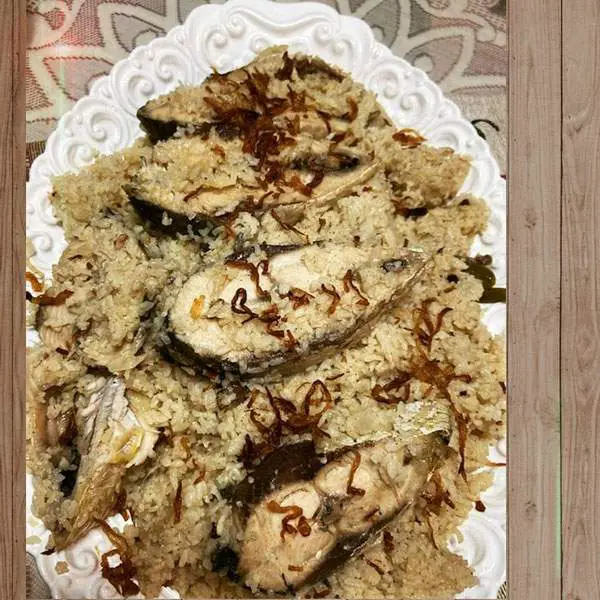Exploring the Culinary Culture of Pre-Colonial Bengal: A Taste of Tradition
Bengali cuisine is highly recognized for its unique and fascinating culinary legacy, as well as for the Bengal region’s rich cultural heritage. Throughout the pre-colonial period, our region had a distinctive culinary culture, distinguished by features that set it apart from other regions of the country.
One notable aspect of Bengali cuisine is the categorization of dishes into four types: charbya, choṣhya, lehya, and peya. In this blog post, we will delve into these categories, exploring the essence of pre-colonial Bengali cuisine and its significance in shaping the region’s culinary identity.
- Charbya: Something to Chew On
The first category, charbya, represents solid foods that are meant to be chewed. It encompasses a wide array of ingredients, including rice, fish, meat, and vegetables. Rice, being a staple in Bengal, forms the foundation of many traditional meals. The art of cooking rice to perfection, whether steamed, boiled, or biryani-style, is a skill that has been honed over generations. The inclusion of fish, both freshwater and marine, adds a distinct flavor to Bengali cuisine, with preparations like macher jhol (fish curry) such as Chapila Fish Curry and or Ilish/ Hilsha Pulao being revered delicacies.
- Choṣhya: Erode Away
Choṣhya refers to foods that are meant to be sucked or consumed in liquid form. This category includes a range of refreshing drinks that complement the main meal. Ambal, a tangy tamarind-based beverage, offers a burst of flavors that awaken the taste buds. Tak, a spiced buttermilk, provides a cooling and digestive element to the dining experience. These beverages not only quench thirst but also serve as palate cleansers, enhancing the overall gastronomic journey.
- Leyha: Is it even Bengali cuisine if You Aren’t Slurping?
Leyha represents foods that are meant to be licked or used as condiments. Chatni, or chutney, takes center stage in this category. Bengali cuisine has a wide variety of chutneys to offer. Chutneys are an important part of Bengali cuisine. From the spicy kick of kasundi (mustard sauce) to the sweet and tangy flavor of mango chutney, these condiments enhance the dishes depth and personality. Bengali chefs’ diversity may be seen in the range of fresh produce such as fruits, vegetables, herbs, and spices they use to make chutneys.
- Peya: Take a Sip of Indulgence
The final category, peya, encompasses beverages and liquids meant for consumption. Milk-based drinks hold a special place in Bengali cuisine, with plain milk, spiced milk (masala doodh), and rice pudding (payesh) being beloved choices. These beverages offer a touch of sweetness and provide comfort and nourishment. Tea, or “cha” as it is known in Bengali, is another popular drink, served hot and enjoyed during social gatherings or as a morning ritual.
Additional Insights into Pre-Colonial Bengali Culinary Culture
Spices and Aromatics: A broad spectrum of spices and aromatics shaped pre-colonial Bengal’s culinary tradition. Spices like turmeric, cumin, coriander, mustard, and fenugreek were used to give layers of richness to the recipes. Aromatics like ginger, garlic, and onions infused tastes into the dishes, resulting in an optimal balance of taste and aroma.
Seasonal Variations: Bengali cuisine has always been closely tied to the seasons and the availability of fresh produce. Pre-colonial Bengal embraced the concept of cooking with seasonal produce, celebrating the flavors that each season brought. From the abundance of summer fruits like mangoes and lychees to the winter harvest of vegetables like cauliflower and radishes, the cuisine evolved with nature’s bounty.
Rituals and Festivals: Bengali cuisine is intricately woven into the fabric of rituals and festivals. Pre-colonial Bengal saw a multitude of cultural celebrations, and each occasion had its unique culinary traditions. Whether it was the lavish spread of sweets during Durga Puja or the ritualistic food offerings during festivals like Poush Parbon and Nobanno, food played an integral role in expressing devotion and gratitude.
Preservation Techniques: Pre-colonial Bengali cuisine relied on diverse preservation techniques to assure that food was available year-round. In the absence of modern refrigeration, sun-drying, pickling, and fermenting techniques were utilized to preserve vegetables, seafood, and even fruits. These preserved items offered depth and diversity to Bengali households’ culinary repertoire.
Influence on Bengali Sweets: The culinary tradition of pre-colonial Bengal also had a great impact on the region’s sweet delicacies. Bengali sweets, often known as “mishti,” are famous for their distinct flavors and textures. Milk, ghee (clarified butter), and jaggery (unrefined sugar) are common ingredients in traditional sweet recipes, conforming to the region’s culinary traditions.
Understanding pre-colonial Bengali culinary history reveals the deeply rooted traditions, flavors, and rituals that have shaped Bengali food into what it is today. It serves as a memorial to the region’s rich history and cultural diversity, as well as a reminder of the importance of preserving and maintaining these culinary traditions.
The culinary culture of pre-colonial Bengal is a mixture of three T’s tastes, textures, and traditions. The categorization of Bengali dishes into charbya, choṣhya, lehya, and peya provides a glimpse into the nuanced approach to food consumption in the region. From the chewable delights of rice and fish to the sips of refreshing beverages, Bengali cuisine celebrates the art of indulgence and communal dining.
Beyond the categorization, pre-colonial Bengali cuisine was deeply rooted in the region’s geography and agricultural practices. The fertile lands of Bengal offered an abundance of rice, vegetables, and fruits, laying the foundation for a diverse and bountiful culinary palette. The rivers and water bodies provided a rich source of fish, contributing to the prominence of fish-based preparations in Bengali cuisine.
Moreover, the culinary practices of pre-colonial Bengal were deeply intertwined with the social fabric of the community. Mealtimes were not just about satisfying hunger; they were occasions for gathering, bonding, and celebrating. Traditional Bengali households would often prepare elaborate feasts, showcasing their culinary skills and hospitality. Dinners like this would bring together family, friends, and even neighbors, stimulating a sense of community and togetherness.
While the topography of Bengal has changed over time, and modern influences have affected its gastronomic landscape, the spirit of pre-colonial Bengali food remains. Traditional recipes passed down through generations are still treasured and conserved, ensuring that the flavors and techniques of the past are not forgotten.
Today, in both Bengali households and restaurants, one can experience the magic of charbya, choṣhya, lehya, and peya. From savoring a plate of steaming rice and fish to relishing the tangy notes of ambal and the sweetness of chatni, Bengali cuisine offers a sensory journey like no other.
So, the next time you sit down for a Bengali meal, take a moment to appreciate the rich culinary heritage that has shaped the dishes before you. Make sure to embrace the taste, textures, and traditions that make Bengali cuisine unique. It is a tribute to the history, culture, and resilience of the Bengali people, their love for food, and their passion for sharing it with others.
References
- Our Food Their Food: A Historical Overview of the Bengali Platter | Sahapedia. (n.d.). Sahapedia. https://www.sahapedia.org/our-food-their-food-historical-overview-of-the-bengali-platter
- Mukhopadhyay, Bipradas.. Pak Pranali. Kolkata: Ananda Publishers. 2007



